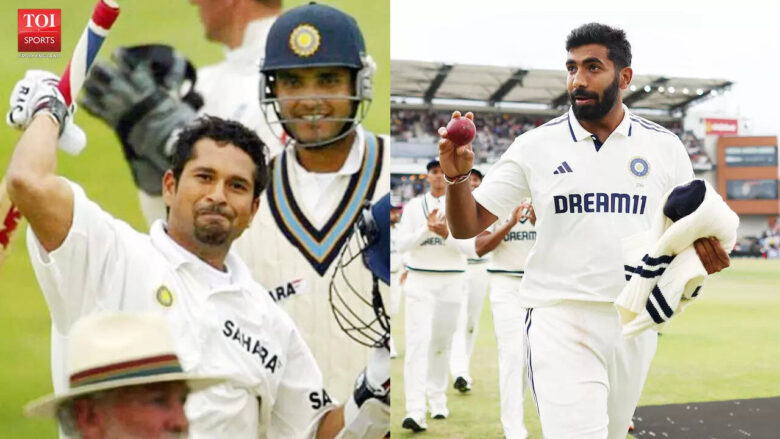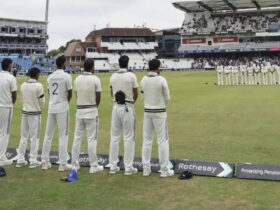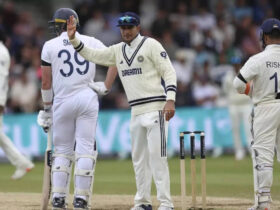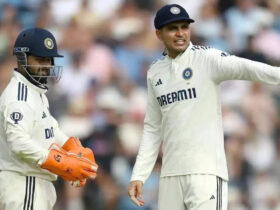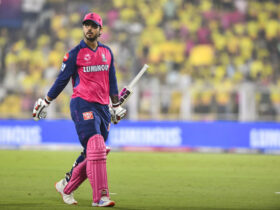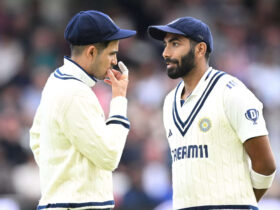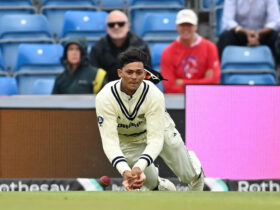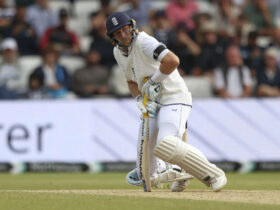Headingley Test: Jasprit Bumrah’s Lone Battle Echoes India’s ‘90s Tendulkar Era
In the heart of Leeds, under a sky painted grey with anticipation, Jasprit Bumrah stood as India’s solitary warrior at Headingley. With the ball in his right hand and a sweater slung over his left, the Indian pace spearhead gazed at the giant screen replaying his fifth wicket of the day. There’s a raw thrill in watching timber shattered, and Bumrah savored the moment before tipping his cap to a roaring, sold-out crowd. With a subtle raise of the ball, he marked his 14th five-wicket haul in Test cricket, striding back to the dressing room as the undisputed hero of the hour.
For a grueling 24.4 overs, Bumrah waged a battle that felt hauntingly familiar to Indian cricket fans. His fellow bowlers faltered, fielders dropped catches, yet he soldiered on, over after over, spell after spell. When a catch went down off his bowling, he buried his face in his cap; when it happened again, his eyes barely flickered. But composure remained his ally. With unrelenting intensity, he ran in hard, delivering a magnificent fifer that underscored his status as India’s bowling linchpin.
Yet, the parallels to the ‘90s are impossible to ignore. Back then, it was Sachin Tendulkar against the world, a lone batter carrying India’s hopes. Today, it’s Bumrah versus the opposition, a solitary bowler shouldering the attack. While he built pressure with surgical precision, the other end often leaked runs. Prasidh Krishna and Mohammed Siraj struggled for consistency, conceding 250 runs in 47 overs between them. Siraj showed glimpses of menace on Day 2 with an older ball, but by Day 3, he was directionless. Krishna, sticking to a short-ball ploy with the aging Dukes, nabbed three wickets but was punished ruthlessly when his lines strayed.
The numbers and visuals tell a grim story of imbalance. England’s batters, buoyed by their aggressive Bazball approach, capitalized on India’s erratic bowling. While Bumrah conjured magic, the team’s handling of the second new ball was dismal, allowing England’s lower order to pile on 114 runs in just 20.4 overs. Even in ideal conditions—overcast skies and a biting wind—the supporting seamers failed to make an impact. Shardul Thakur, curiously underbowled, sent down a mere six overs out of India’s 100.4, leaving fans and analysts puzzled over the team management’s tactics.
This script isn’t new; it mirrors India’s struggles during the Border-Gavaskar Trophy in Australia. Siraj and Krishna, with ample experience traveling with the senior and ‘A’ sides, should be stepping up. Siraj, no stranger to the Dukes ball, and Krishna, with his raw pace, must find rhythm to complement Bumrah. Instead, Headingley witnessed a one-man show, with Bumrah summoned before breaks to weave his magic—picking two quick wickets when all seemed lost.
But here lies the looming concern: Bumrah, for all his brilliance, cannot carry this load indefinitely. At 29 years old and with a history of injuries, his availability for a full five-Test series remains uncertain. India must prepare for life beyond Bumrah, and the time is now. The handling of the new ball remains a glaring weakness, and it’s imperative that seasoned pros like Siraj raise their game. The ghosts of the ‘90s—where Tendulkar’s genius often masked systemic flaws—hover over this team. Will history repeat, or will others drill Bumrah’s mantra of eat, sleep, pick wickets, repeat into their ethos?
As the Headingley Test unfolds, Bumrah’s heroics have given India a fighting chance, but the cracks in the bowling unit are evident. The crowd’s ovation for their star pacer echoes a bittersweet truth: one man’s brilliance cannot win a series alone. India’s future in this Test—and beyond—hinges on whether the supporting cast can finally step out of the shadows.










